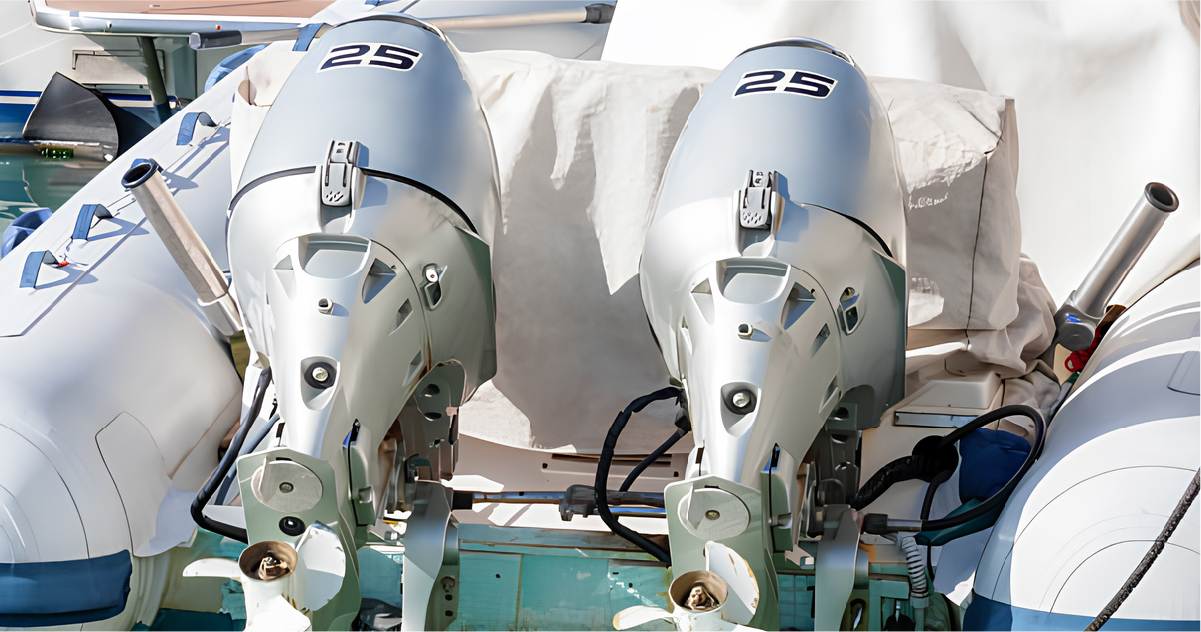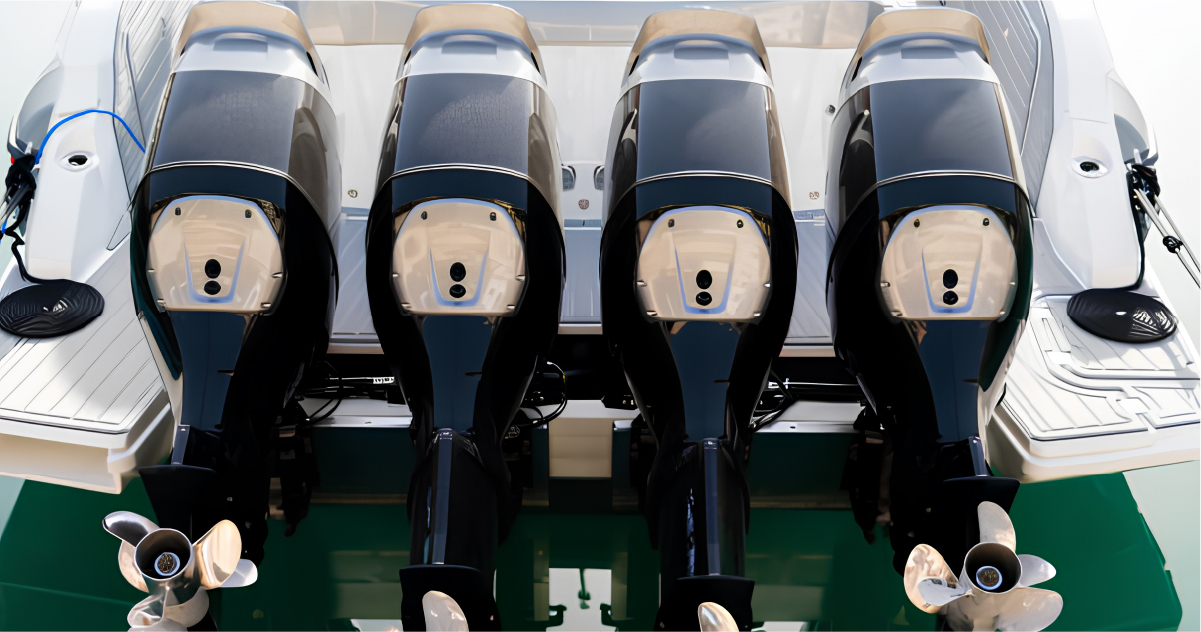2-Stroke vs. 4-Stroke Outboard Motors: Which One Truly Delivers the Best?
If you have ever stood at the dock listening to two boaters argue about outboards, you have probably heard it: “Two-strokes have more kick.” “Yeah, but four-strokes won’t leave you stranded.” The truth is they are both right, depending on what you are asking that engine to do.
As someone who is torn down, rebuilt, and shipped thousands of outboard parts over the years, I can tell you this: the debate between 2-stroke and 4-stroke outboards is not just about power or preference—it’s about matching the motor to the kind of work (or play) your boat actually does.
Are you chasing speed in shallow water? You might want the raw torque of a modern 2-stroke. Running long offshore trips with a full load? A fuel-efficient 4-stroke might be the better call. And that’s not even touching on maintenance, parts availability, or how the EPA changed the game for 2-strokes over the past decade.
In this guide, we are looking at how these motors perform in the real world that is what you actually need to know in 2025.
The Core Mechanics of 2-Stroke and 4-Stroke Outboards
Before diving into performance and efficiency, it’s important to understand how each engine type actually works—and why that matters on the water.
How 2-Stroke Engines Generate Power with Fewer Moving Parts

istock/mgallar
2-stroke outboards are known for their lightweight build, simple design, and snappy acceleration. They operate by completing a power cycle in just two strokes (an upstroke and a downstroke), making them faster to fire and more responsive compared to 4-strokes.
Anglers, recreational boaters, or anyone who values power, simplicity, and a lightweight engine for short bursts of use or high-speed boating.
Fuel and air mix together inside the combustion space, and a spark sets it off. This engine needs just two moves of the piston; it makes power faster than a 4-stroke engine. Because of this simplicity, these motors tend to be more compact and lightweight.
Key Benefits
- High power-to-weight ratio: Delivers strong performance with less weight.
- Simplicity in design: Fewer moving parts reduce the chances of mechanical failure.
- Quick throttle response: Especially useful in sports or fishing, where maneuverability matters.
- Lower upfront cost: Generally more affordable than a 4-stroke engine.
Drawbacks
- Higher emissions: Older models, in particula,r emit more pollutants.
- Louder operation: Known for their louder, high-pitched engine noise.
- Shorter engine life: Tends to wear out faster than 4-stroke alternatives.
- Mixed fuel requirements: Requires mixing oil with fuel (unless it has oil injection).
The 4-Stroke Engine Cycle and Why It’s Built for Longevity

istock/Scharfsinn86
A 4-stroke outboard works a bit like a car engine. It runs through four steps, intake, compression, combustion, and exhaust. These steps help it create power in a smoother way.
This setup makes it quieter and efficient, it also uses fuel better.
People who care about saving gas often pick this type. It’s also good for those who want less noise. And for boaters who go out often or stay on the water a long time, it’s a solid pick.
A 4-stroke motor runs through four piston movements in each cycle. These movements help the engine burn fuel better. It also makes it use fuel more wisely. The oil and fuel go into the engine through different paths. There’s no need to mix them before adding.
Also Read: What Boat Has the Most Motors?
Key Benefits
- Superior fuel economy: Consumes less fuel over time, saving money on long trips.
- Cleaner operation: Lower emissions and generally more environmentally friendly.
- Quiet and smooth performance: Offers a more comfortable and less disruptive ride.
- Longer engine lifespan: More durable for extended use.
Drawbacks
- Higher cost: Typically more expensive to buy and repair.
- Heavier weight: Larger and heavier than 2-stroke models of similar horsepower.
- Complex design: More moving parts mean more components that could require maintenance.
Performance Comparison: Which One is Better?
| Performance Metric |
2-Stroke Outboard Motor |
4-Stroke Outboard Motor |
| Power Stroke Frequency | Every revolution of the crankshaft | Every other revolution of the crankshaft |
| Top Speed Potential | Often higher due to better power-to-weight ratio | Slightly lower, especially in smaller HP classes |
| Acceleration | Rapid and snappy throttle response | Gradual, smoother acceleration |
| Oil Consumption | Burns oil with fuel (premix or oil-injected) | Separate oil system; doesn't burn oil with fuel |
| Operating RPM Range | Performs better at high RPM | Optimized for mid-to-low RPM cruising |
| Throttle Control Sensitivity | Highly responsive to quick changes | More progressive and linear throttle control |
| Vibration Level | Higher due to power pulse every revolution | Lower, smoother due to spaced firing intervals |
4-Stroke or 2-Stroke Engine - Which One Should You Choose?
The decision between a 2-stroke and 4-stroke outboard motor depends heavily on your boating habits, environmental considerations, and how much you're willing to invest upfront or in maintenance.
Choose a 2-Stroke Outboard Motor if:
- You need a lightweight engine for a small vessel.
- You value quick throttle response and higher speed.
- You plan on shorter, more intense trips.
- You prefer a simpler engine with fewer parts to manage.
Choose a 4-Stroke Outboard Motor if:
- You prioritize fuel economy and lower running costs.
- You want a quiet and eco-conscious boating experience.
- You often go on long fishing or leisure trips.
- You’re looking for long-term reliability and durability.
Boaters who often fish in lakes or protected areas may be required to use low-emission reliable engines, making 4-strokes a better fit. On the other hand, adrenaline-seeking boaters might still lean toward 2-stroke motors for their raw power and agility.
FAQs
Are 4-stroke outboards harder to repair?
They are more complex, which may make DIY repairs more challenging. However, their need for less frequent maintenance can offset this issue for many boaters.
Which is better for beginners?
Beginners often prefer 4-stroke engines because of their quiet operation, clean running, and minimal hands-on maintenance. However, 2-strokes can also be beginner-friendly if you understand fuel mixing.
The Bottom Line
Some boaters like the speed and simplicity of 2-stroke motors. Others go for the smoother, quieter ride of a 4-stroke. It all depends on how you use your boat. How often do you head out? And how much time are you willing to spend taking care of your motor?
Browse our full catalog of OEM and aftermarket outboard parts
At Marine Parts Warehouse, we support both camps. Whether you are looking to upgrade, maintain, or repair your outboard motor, we offer quality parts. Call us at 270-618-5200 for expert guidance to keep you running strong.
Posted by Brian Whiteside


